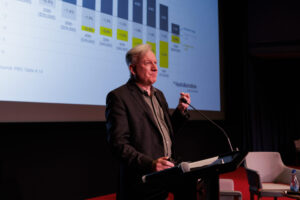How to actually do Stage 3 better

Rejigging the flawed Stage 3 tax cuts would save up to $130 billion over a decade while delivering a bigger slice of the pie to 80% of taxpayers. Here’s four ways to make that a reality.
The Stage 3 tax cuts, due to come into effect in July 2024 have long been regarded by the Australia Institute and other leading economists as unfair and wasteful.
They’re the most expensive and most inequitable tax cuts in Australia’s history. If they were listed as expenditure, they would be the ninth most expensive program item in the budget.
While governments have been reluctant to scrap the policy altogether. That’s a difficult sell for a government.
So, the Institute has been at the forefront of efforts to restructure the cuts, to make them more equitable and more economically responsible.
There are plenty of reasons that the Stage 3 cuts should be redesigned (we kept that list to 18 items) – including the fact that they’ll make inflation worse, keep interest rates higher for longer and deliver twice as much benefit to men as women.
But what does redesigning them look like, and what effect will that have?
The Australia Institute’s report, A Better Stage 3: Fairer tax cuts for more Australians, examines four possible alternatives.
Here’s the top line:
- Each alternative would cost between $70 billion and $130 billion less than Stage 3 as it stands today.
- Under all four alternatives, everyone earning between $45,000 and $124,600 would also receive a more significant tax cut.
- In three of the alternatives those earning less than $45,000 — who will receive no tax cuts under the current Stage 3 — will all be better off.
- Those on $100,000 would have between $522 and $868 more in their pockets come tax time, while people on $65,000 would be between $200 and $875 better off.
Now, lets break the four options down.
Alternative one
Reduce the 32.5% rate to 29% for people earning between $45,001 and $120,000
Why it’s good:
- This would give the biggest tax cut to people on $120,000 or less
- Everyone earning up to $130,700 would receive a larger tax cut than under the existing Stage 3
- Taxpayers would save $130 billion over a decade
Alternative two
Reduce the 19% tax rate for those earning between $18,201 and $45,000 to 17%, and lower the 32.5% tax rate for those earning between $45,001 and $120,000 to 30%
Why it’s good:
- This would give the biggest cut to people on $120,000 or less
- Everyone earning up to $127,600 would receive a larger tax cut than under Stage 3 as it stands
- Taxpayers would save $111 billion over a decade
Alternative three
Lower the 19% tax rate for those earning between $18,201 and $45,000 to 15%, and the 32.5% tax rate for those earning between $45,001 and $120,000 to 31%
Why it’s good:
- This would give the biggest tax cut to those earning $45,000
- All taxpayers earning up to $124,600 receive a larger tax cut than would be the case under Stage 3
- Taxpayers would save $92 billion over a decade
Alternative four
Lower the 19% tax rate to 18%, raising the $45,000 threshold to $50,000. Cut the 32.5% to 30% tax rate for those earning between $45,001 and $120,000, with the threshold raised to $50,001.
Why it’s good:
- This would give the largest tax cut to those earning $120,000
- Everyone earning up to $132,400 would receive a larger tax cutthan would be the case under Stage 3
- Taxpayers would save $70 billion over a decade
Between the Lines Newsletter
The biggest stories and the best analysis from the team at the Australia Institute, delivered to your inbox every fortnight.
You might also like
Stage 3 Better – Revenue Summit 2023
Presented to the Australia Institute’s Revenue Summit 2023, Greg Jericho’s address, “Stage 3 Better” outlines an exciting opportunity for the government to gain electoral ground and deliver better, fairer tax cuts for more Australians.
18 Reasons why the Stage 3 tax cuts should be redesigned
Australia Institute research shows the Stage 3 income tax cuts are fiscally irresponsible, massively expensive and completely unfair.
Stage 3 Tax Changes: A Win for Australians & Sensible Policy
Politicians are often accused of backflipping when they change their minds.


